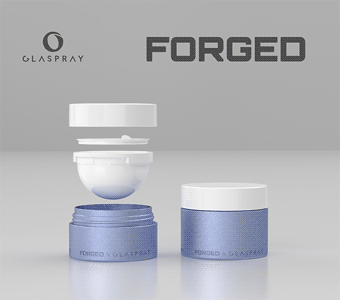Premium Beauty News - Most of your research is aimed at understanding the biological processes involved as roses produce their scent. Can you summarise the different stages?
Sylvie Baudino - Our teams are working on rose scents, but also on other models such as lavender, fig or pelargonium, which produce geraniol used by the perfume and cosmetics industries. Geraniol contributes to the typical scent of roses and is synthesised in an original way by roses.
Our research focuses on the diversity of fragrances, i.e. the variety of compounds emitted by a vast variety of roses. We know that over 35,000 varieties of rose have existed, of which several thousand still exist today. Roses do not all give off the same amount of fragrance and can produce molecules in varying proportions. Their scents have different characteristics (notes of tea, myrrh, fruit, cloves...). We aim to characterise this diversity by studying biosynthesis pathways.
Premium Beauty News - How does the fragrance production take place at the molecular level?
Sylvie Baudino - I will simplify the production phenomenon, which is complex. When a rose produces a fragrance, most of this activity takes place in the petals, which are the flower’s organs that attract pollinating insects. Petals are made up of cells that can be considered as "perfume factories". Cells contain enzymes that work to produce these scents. Depending on the plant variety, these enzymes are more or less active.
To go further and understand why some varieties produce fragrances while others do not, we have studied the genes that produce these enzymes. We noticed that fragrant roses combine several molecules. Some of them can be perceived by humans, even though they were originally meant to attract pollinating insects. The fragrance, which is the result of these biological reactions, can be used to select roses.
Premium Beauty News - What makes roses different from other plants?
Sylvie Baudino - We focused particularly on the rose’s emblematic molecules: monoterpenes, geraniol, and derivatives such as citronellol. In 2015, we published our results in the journal Science. We demonstrated that roses follow an original biosynthetic pathway, which involves an enzyme called NUDX1 belonging to the Nudix hydrolase family. Until now, this enzyme has never been used in perfume production. Later, other teams showed that these Nudix hydrolases also played a role in the production of fragrances in other plants, which use the same biosynthetic pathway as roses.
Premium Beauty News - What are you and your team currently working on?
Sylvie Baudino - We are studying the phenomena involved in wild rose species, of which there are around 150, including the dog rose (Rosa canina) which grows in France. China appears to be the cradle of these wild roses. Since ancient times, man has made crosses from these wild roses, probably from just ten or so species, but it was mainly in the 19th century that breeders became very productive.
We have shown that the synthetic pathway identified in cultivated roses was already occurring in the wild. It involves genetic components called transposons, which move genes from one chromosome to another, which can lead to significant changes in their expression. Our teams have established that for the entire Rosaceae family (roses, but also strawberries, plums, and apples), monoterpenes are not synthesised in the plastid, where the plant achieves photosynthesis, but in the cytosol. These findings were published in the journal PNAS in 2023.
Research is continuing on the Nudix gene, the source of geraniol, and its regulation. We are also investigating the location of the fragrance in the petal cells and how it is stored, travels within the cell and leaves it. We have recently received funding from the French National Research Agency (ANR) to study the secretion of fragrance compounds. We are teaming up with various laboratories (IRHS Angers, Institut Fresnel Marseille), including an American laboratory at Purdue University, led by Natalia Dudareva, a pioneer in the study of plant fragrances.
Premium Beauty News - Can these discoveries be used to grow roses?
Sylvie Baudino - We are working with the horticultural sector, with rose breeders, and in particular, the Meilland Company, which has funded some of our research. They are keen to analyse the fragrances in their rose varieties and are seeking to understand how the scent is synthesised to guide their cross-breeding. We can predict the chances of obtaining fragrant flowers in their offspring by analysing the fragrances and the corresponding genes. We are looking to identify selection markers from the genes to help us make informed cross-breeding decisions.
Premium Beauty News - And more specifically in the cultivation of roses as perfume plants?
Sylvie Baudino - The perfume industry is more conservative, and since the 19th century has focused on two varieties of rose: Rosa centifolia (Grasse) and Rosa damascena (Bulgaria). The centifolia and damascena varieties used by the perfume industry are hybrids that are difficult to cross. In recent years, there have been a few attempts to use other varieties for the production of essential oil, particularly in China, but results generally remain confidential... Rosa centifolia and Rosa damascena produce large quantities of perfume with a wide range of fragrant molecules. They are ideally suited for extraction processes for the production of absolutes or essential oils.
The French production centre in Grasse, is quite limited, unlike other centres located abroad: in Bulgaria, Turkey, or Morocco. There is currently no production centre in France in a position to interact with our biosynthesis research, which is very much upstream.
Premium Beauty News - Have you been approached by some fragrance houses?
Sylvie Baudino - We have contacts with some of them, especially IFF via the LMR network in Grasse, not for roses but for Pelargonium.
IFF wants to find out more about biosynthesis, how genes work and how to optimise crossbreeding. With them, we have looked at the conditions under which roses are grown in Turkey, to determine how to improve yields. We have also approached Bulgarian researchers who are studying the Rosa damascena variety, which they have reproduced extensively. This diversity could form an interesting starting point for research.
Premium Beauty News - Are perfumers interested in your approach?
Sylvie Baudino - We regularly exchange ideas with perfumers at conferences. I have also talked to them at rose contests, as we sit on the same jury... Perfumers take a slightly different approach to us. When it comes to fragrances, they are not necessarily looking for quantity but rather for originality, subtlety, and novelty. Our evaluation criteria are different. As a new rose species can take 15 years to develop, improving it for the production of essential oil is difficult, with no guarantee of results concerning its scent. With IFF, we are looking at the long term for Pelargonium.
Premium Beauty News - Can you tell us about the Neurose programme "Why do we love the scent of roses so much"?
Sylvie Baudino - We have been working on this programme with Nathalie Mandairon, from the Centre de Recherche en Neuroscience de Lyon (CRNL). She is currently President of GDR 03, a transdisciplinary research group focusing on the field of Fragrant-Smell-Olfaction, of which I am also a member.
We have started studies on the perception of roses, whereas most of the research has focused on essential oils, which, as you know, have a different smell from that of fresh flowers. This comes from the reactions that take place during distillation in a still, the emergence and fading of certain molecules. For example, damascenone molecules found in the essential oil are highly prized by perfumers but do not exist naturally. Roses only produce precursors of this molecule.
In our study, participants answered questions about their perception of the fragrance by testing a panel of natural roses. At the same time, we studied the specific molecules produced by these different varieties. We then established the links between the scents emitted by these molecules and reactions during olfaction. We will shortly be publishing these results and would like to take this research further within a consortium (CRNL, IRHS Angers, ESA Angers, ONIRIS Nantes), some of whose members have already studied wine molecules. These scents have several things in common. With an olfactometer we are going to measure the reactions produced by the scent of each molecule, after using a gas chromatograph to separate them one by one.
Premium Beauty News - Could understanding living organisms and reactions at the molecular level be used to approach the creation of new fragrance molecules from a different angle?
Sylvie Baudino - Understanding the biosynthesis of all these fragrance molecules could, for example, be used to produce them using synthetic biology, in bacteria, yeast or even plants.






































